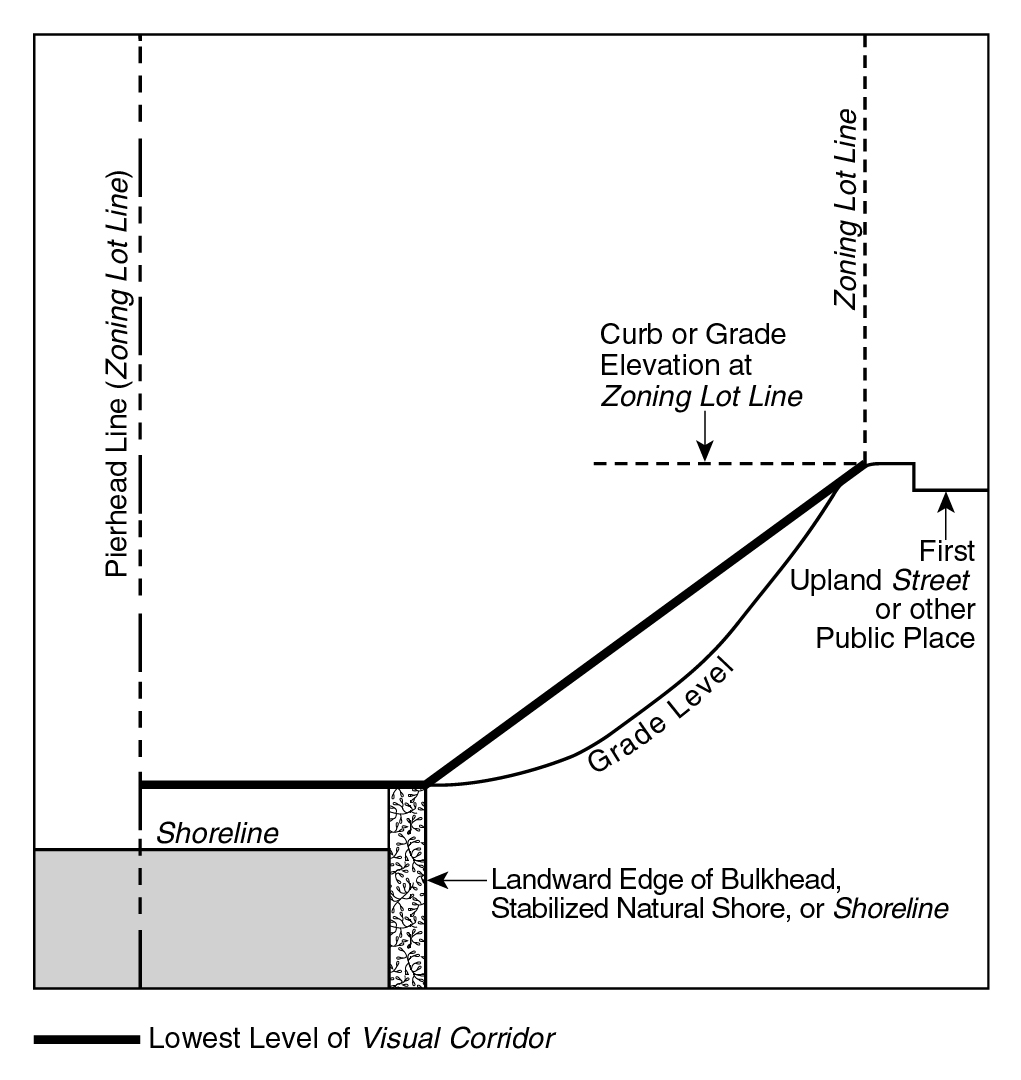Dimensions of visual corridors
The width of a visual corridor shall be determined by the width of the street of which it is the prolongation but in no event less than 50 feet. Visual corridors that are not the prolongations of streets shall be at least 50 feet wide. For the purposes of establishing the width, vehicular turnarounds at the terminations of such streets, including curved or flanged treatments at intersections, shall be omitted.
The level of a visual corridor shall be determined by establishing a plane connecting the two points along the street lines from which the visual corridor emanates at an elevation five feet above curb elevation with the two points where the prolonged street lines intersect the shoreline, stabilized natural shore, bulkhead, or upland edge of a waterfront yard, or the base plane of a pier or platform, whichever intersection occurs first. Such plane shall then continue horizontally seaward from the line of intersection. Visual corridors that are not prolongations of mapped streets shall be determined by establishing a plane connecting an elevation five feet above curb elevation at the two points along the lot line from which the visual corridor emanates with the two points of intersection at the shoreline, stabilized natural shore, bulkhead, upland edge of a waterfront yard, or the base plane of a pier or platform, whichever intersection occurs first.
No obstructions are permitted within a visual corridor, except as set forth in Sections 62-513 and 62-60 (DESIGN REQUIREMENTS FOR WATERFRONT PUBLIC ACCESS AREAS), inclusive, when a visual corridor coincides with an upland connection.
LEVEL OF VISUAL CORRIDOR
(62—512)


